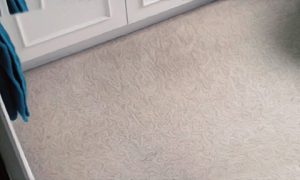 Three out of every four pet shops in Melbourne have never been properly cleaned, a study released yesterday has shown.
Three out of every four pet shops in Melbourne have never been properly cleaned, a study released yesterday has shown.
Most pet shop owners are unaware that they should get professionally floor and carpet steam cleaning, Melbourne pet shop expert Dylan Larkins says.
“Pet shops are notoriously filthy places as animals largely cannot clean up after themselves,” he said.
“Yet cleaning duties are usually performed by staff when manning the shop. As a result, the cleaning is only for cosmetic purposes.”
The pet shop cleaning study was undertaken by Larkins, who had long suspected that pet shops were not being cleaned adequately.
Carpeted pet shops are slightly more likely to have had their floors cleaned, the study reveals. Larkins suggests in the study that this is because the pet shop owner may be aware that carpet can absorb odours.
“Floorboards usually get a good sweeping once or twice a week, and that’s it,” Larkins said, paraphrasing his conclusions.
“Furthermore, pet shop owners think that cleaning by a broom which may be re-used for many years is hygienic. The best option would actually be grout and tile cleaners for Melbourne regulations to be satisfied.”
Pet shop sales assistant Katrina Owers, 16, agrees with the findings of the study.
“As far as I know, the floors never get cleaned other spot cleaning when a mess is made,” she said.
“Usually it is because a bunny has pushed straw out of its cage and onto the floor. If I’m serving a customer, I usually don’t even worry about cleaning it up until long after they’re gone, because I might forget. We do clean inside the cages every week, though, so at least that’s something.”
The study also revealed that Melbourne pet shops who do hire professional carpet cleaners regularly are likely to have higher sales figures over the last quarter.
“What we’re seeing here is a feedback loop,” explained Larkins.
“Bigger shops are more likely to have strategies in place to manage cleaning such as hiring a proper cleaner, and in turn, stores that have better cleaning procedures have higher takings as customers spend longer in the store. This is consistent with a previous study of mine, which found that customers spend less time in shops with unpleasant odours.”
 I think I might have ended up with a restraining order…against the sky. Well, uh, sort of?
I think I might have ended up with a restraining order…against the sky. Well, uh, sort of? Moving day is over, I can tentatively say that it’s all done with. I thought just the process of
Moving day is over, I can tentatively say that it’s all done with. I thought just the process of  There comes a time when an office job is not enough. I’m done with fetching coffee and making copies! Also, making coffee and fetching copies. It’s very easy to get those two mixed up, and that also is a stress I do not need in my life.
There comes a time when an office job is not enough. I’m done with fetching coffee and making copies! Also, making coffee and fetching copies. It’s very easy to get those two mixed up, and that also is a stress I do not need in my life.